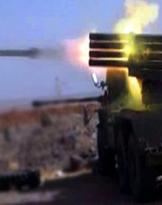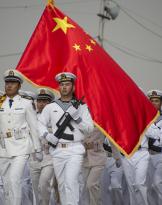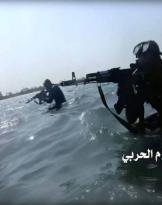The statements by Iraqi vice president Allawi are direct: the Islamic State is seeking a structural alliance with Al Qaeda to continue the struggle in Syria and Iraq in the name of jihad. Allawi, a Shiite like President Anbadi, cites intelligence sources that Al Baghdadi (ISIS) and Zawahiri (Al Qaeda) emissaries have already met to plan a common operational plan. The news comes as some agencies bounce (without confirmation) the capture of Al Baghdadi by the Russian services between Iraq for Syria.
It is good to make some specifications. Since 2014, Al Qaeda and ISIS are officially at odds. More than talking about differences, we could put the two acronyms together according to a timeline. Sunni Sunnis deeply convinced of the need for a global war against the West and the establishment of a theocratic system based on Islamic (Sunni) supremacy, both groups drew heavily from the support of Saudi Arabia. The most conservative Wahhabism was the embryo of the late 80 Afghan Islamist insurgency on the basis of which Bin Laden then created Al Qaeda and the Taliban took power in Kabul; Saudi Wahhabism itself is the sponsor of the Islamic State, born as a phantom state straddling Iraq and Syria, following the disintegration of Iraqi institutions dominated by Sunnis.
Al Qaeda and the Taliban experience are born to fill a void in Central Asia due to the Afghan civil war; ISIS is born to fill the one generated by Iraqi Freedom in the 2003 and to counter the Shiite arc generated between Beirut, Damascus, Baghdad and Tehran. If the operation is behind Al Qaeda Cyclone of the CIA coordinated by the deputy Charlie Wilson in agreement with the Pakistani services (the infamous ISI, omniscient on the subject of Islam), behind the ISIS there is Riad, which has reorganized Sunni military and paramilitaries disbanded following the dissolution of the Baath party and of the Iraqi Armed Forces in the 2003 (famous stroke of genius of the American "governor" Paul Bremer).
The ideological contrast ("Islam is not divided", according to the original universalist idea of Al Qaeda) should therefore be reduced to internal conflicts between leadership and organizational strength. Al Qaeda is a virtual federation that has generated cells around the Islamic world (Al Nusra in Syria for example); ISIS is a para-state with its own infrastructure. We cannot claim that they are exactly the first (Al Qaeda) prelude of the second (Islamic State), but with a good approximation they are an analogous phenomenon adapted to different contexts and patronages. In essence, in fact, little changes: the war against the West and the establishment of a global Caliphate are strategic objectives to be achieved for both cartels through violence.
The summary of the above has been represented in northern Syria in recent months where the settlement of accounts between different Salafist groups linked to Al Qaeda (the former Al Nusra of Jahbat Fateh Al Sham versus and Ahrar al Sham) had a more internal meaning political and ideological.
What will happen now? The bulk of the military game will close in the 2017 both in Iraq and in Syria, but the political horizons are nebulous. For example, the Turkey-Saudi Arabia embrace that has fueled Islamism in Syria for six years will be assessed on the basis of their respective strategic objectives: Riad needs to counter Shia territorial continuity between the Mediterranean and the Gulf; Ankara not to allow that between Syrian Kurds and Turkish Kurds. The United States will once again be the balance.
A precise position will soon be needed with respect to the jihadist groups in northern Syria to prevent the future disintegration of the Islamic State from pouring into another container, such as the Movement for the Liberation of the Levant.
Financing the Afghan students at the turn of the years '80 and' 90 proved to be a tragic mistake. The next choices in Syria (and Iraq) will be equally decisive.












